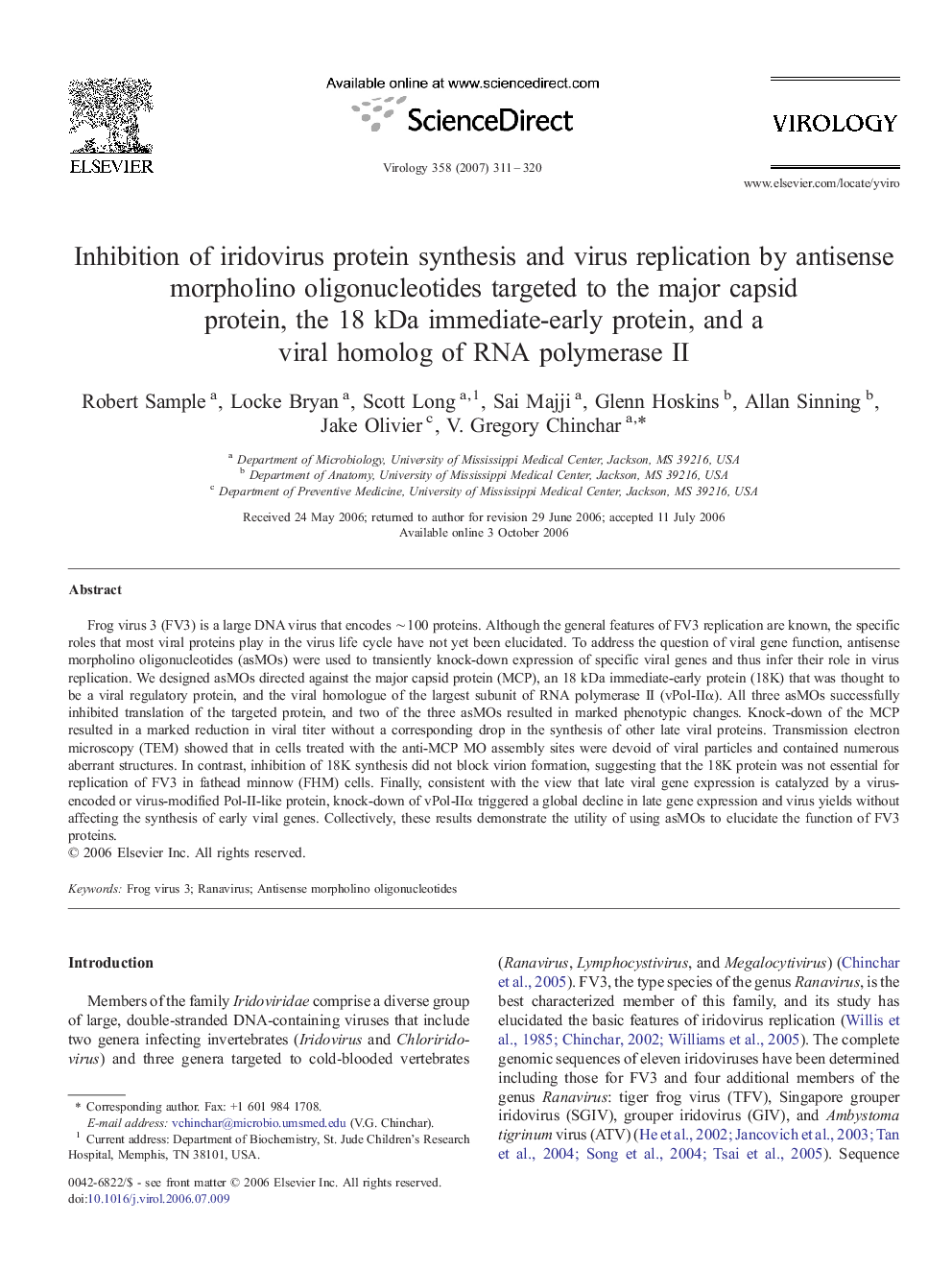| Article ID | Journal | Published Year | Pages | File Type |
|---|---|---|---|---|
| 3427094 | Virology | 2007 | 10 Pages |
Frog virus 3 (FV3) is a large DNA virus that encodes ∼ 100 proteins. Although the general features of FV3 replication are known, the specific roles that most viral proteins play in the virus life cycle have not yet been elucidated. To address the question of viral gene function, antisense morpholino oligonucleotides (asMOs) were used to transiently knock-down expression of specific viral genes and thus infer their role in virus replication. We designed asMOs directed against the major capsid protein (MCP), an 18 kDa immediate-early protein (18K) that was thought to be a viral regulatory protein, and the viral homologue of the largest subunit of RNA polymerase II (vPol-IIα). All three asMOs successfully inhibited translation of the targeted protein, and two of the three asMOs resulted in marked phenotypic changes. Knock-down of the MCP resulted in a marked reduction in viral titer without a corresponding drop in the synthesis of other late viral proteins. Transmission electron microscopy (TEM) showed that in cells treated with the anti-MCP MO assembly sites were devoid of viral particles and contained numerous aberrant structures. In contrast, inhibition of 18K synthesis did not block virion formation, suggesting that the 18K protein was not essential for replication of FV3 in fathead minnow (FHM) cells. Finally, consistent with the view that late viral gene expression is catalyzed by a virus-encoded or virus-modified Pol-II-like protein, knock-down of vPol-IIα triggered a global decline in late gene expression and virus yields without affecting the synthesis of early viral genes. Collectively, these results demonstrate the utility of using asMOs to elucidate the function of FV3 proteins.
